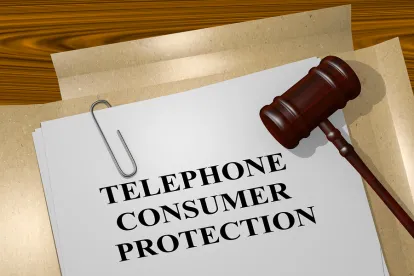Do you remember law school? Remember that guy that sat in the back row that told you he always finishes the readings first because he skips the footnotes? Want a reason to call him and tell him he’s wrong 20 years after graduation? If so, keep reading!
In a recently-filed opinion, District Judge Robert N. Scola, Jr. teaches us the importance of reading the footnotes in all legal filings. Ferrer v. Bayview Loan Servicing, LLC, 2019 U.S. Dist. LEXIS 120627 (S.D. Fl. July 19, 2019). So important, I say, you should read them twice.
In Ferrer, the Court denied plaintiff’s motion for relief from judgment on the grounds that her motion was not made within a reasonable amount of time because the Court put her on notice that she potentially committed excusable neglect a full year before she filed her motion.
The plaintiff’s initial error was failing to enter into evidence a call log which allegedly proved that the defendant used an auto-dialer to contact her. The Court granted summary judgment for the defendant due to an absence of evidence showing the defendant used an auto-dialer. The pro-se plaintiff then filed a motion for relief from judgment exactly one year after the motion for summary judgment was granted. When filing her motion, plaintiff also filed 458 pages of proffered evidence, including the call log.
Fed. R. Civ. P. 60(c)(1) provides that a party has a “reasonable time” not to exceed one year after the entry of judgment to file their motion for relief due to excusable neglect. See Fed. R. Civ. P. 60(b)(1). As Ferrer learned, one-year is not a safe-harbor. Instead, a party moving for relief under 60(b)(1) must file the motion within a reasonable amount of time AND within a year of the entry of judgment.
Now, I’m sure there are circumstances that warrant the 11th hour (59th minute) filing. But, folks, this isn’t it!
Here, the Court actually alerted the plaintiff to her error, notifying her that the call log on which she relied was not in evidence. (Read: You should’ve filed it!) This alert came by way of footnote in the adverse summary judgment order entered on January 25, 2018. The plaintiff then waited 364 days to file her 60(b)(1) motion for relief. Her excuse for waiting so long? “Excusable neglect” due to her preoccupation with the underlying state court foreclosure case (the debt in which the defendant attempted to collect, the whole reason the defendant called the plaintiff in the first place).
Ultimately, Judge Scola found that the one-year delay was simply unjustified and denied plaintiff’s motion for relief from judgment. Specifically, he held, “While the Court is sympathetic to Ferrer’s plight, the summary judgment order placed her on notice that this new evidence was not in the record.” Id. at *5.
In addition to the untimely filing, the Court hinted that even if Ferrer’s motion was timely, it may have likewise denied the motion because Ferrer sent the Court on a wild goose chase, failing to demonstrate why the evidence proved what she alleged. In her motion, the plaintiff made sweeping conclusions such as, “[the evidence] indicates that an auto-dialer was being used.” Id. at *4. But, the plaintiff did not explain why the evidence would prove such a thing. Further, the plaintiff failed to include citations to the almost-500-page stack of documents she provided as evidence. As TCPA World knows, the court is not going to connect your dots for you.
So, lessons learned?
-
Even when the statute says you can have up to one year to file your 60(b)(1) motion, if common sense (or a Court order directed specifically at you) makes you think otherwise, don’t wait out that full year.
-
The Court does not entertain scavenger hunts. So, if you’re going to file a lengthy set of documents with your TCPA claim, make sure to thoroughly flush out your arguments in the brief and use citations to the lines you want the Court to read.
-
Footnotes are important!




 />i
/>i
